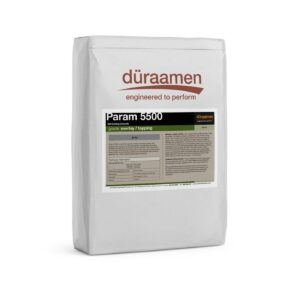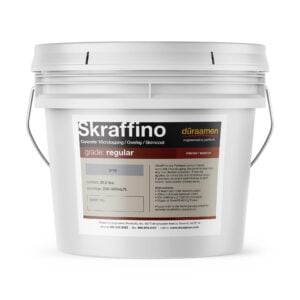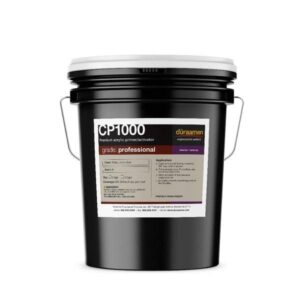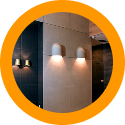Epoxy coatings consist of two components that react with each other forming a durable flooring surface. One component (Part A) consists of an epoxy resin and the other component is a curing agent (also called hardener), Part B. The selection of curing agent or hardener plays a major role in determining many of the properties of the final floor coating. These properties include pot life, dry time, penetration and wetting ability. The epoxy resin (Part A) and curing agent (Part B) are cross-linked in order to develop the epoxy coating’s required characteristics.
The epoxy resin is usually bisphenol A (Bis A) or bisphenol F (Bis F) whereas the curing agents are generally based upon amines or amides. Amine based curing agents are considered more durable and chemical resistant than amide based curing agents but have a tendency to ‘blush’ in moist conditions. Blushing produces a waxy surface layer on actively curing epoxy resulting from a reaction with the curing agent and moisture in the air.
Epoxy floor coatings made with Bis F or Novolac epoxy resin exhibit greatly improved chemical and heat resistance compared to the much more common Bis A epoxies. Most of the epoxy coatings available in the market are based upon Bis A epoxies. Novolac epoxy coatings are expensive than regular epoxy coatings. Novolac epoxy resins are thermosetting plastic materials that provide good strength and chemical resistance at high temperatures. Because of this, these Novolac epoxy resin offer formulators and fabricators excellent alternative to Bis A based epoxies and phenolic resins. The reaction between Novolac epoxy resin and the curing agent produces a unique chemical structure resulting in multi-epoxy functionality and additional reactive sites, producing tightly crosslinked systems that offer the following advantages over bisphenol-A type resins:
- Improved resistance to acids, bases and solvents
- Retention of mechanical properties at high temperatures and under wet conditions
When selecting a curing agent for use with epoxy novolac resins, the effect on cured resin properties must be considered. Modified amines, catalytic curing agents and some anhydrides provide optimum elevated temperature properties. In addition, novolac epoxies cured with polyamide hardeners, or aliphatic polyamines and their adducts, show improvement very similar systems using Bis A based epoxy coatings, However, the elevated temperature performance is still limited by the performance of the curing agent itself.

The thermal stability of Novolac epoxy resins allows their application as adhesives, structural and electrical laminates, coatings and castings in elevated temperature. For instance, ease of processing coupled with resistance to heat of friction – makes epoxy Novolac adhesives ideal for use as binders in abrasives for grinding and polishing products. In electrical laminates, the use of Novolac epoxy resins improves resistance to hot solder, as well as providing elevated temperature service. Floor coatings formulated with Novolac epoxy coatings provide excellent chemical resistance associated with an increased cross-link density when used in solvent or waterborne formulation.
Please Contact Us to discuss your floor coating requirements.






